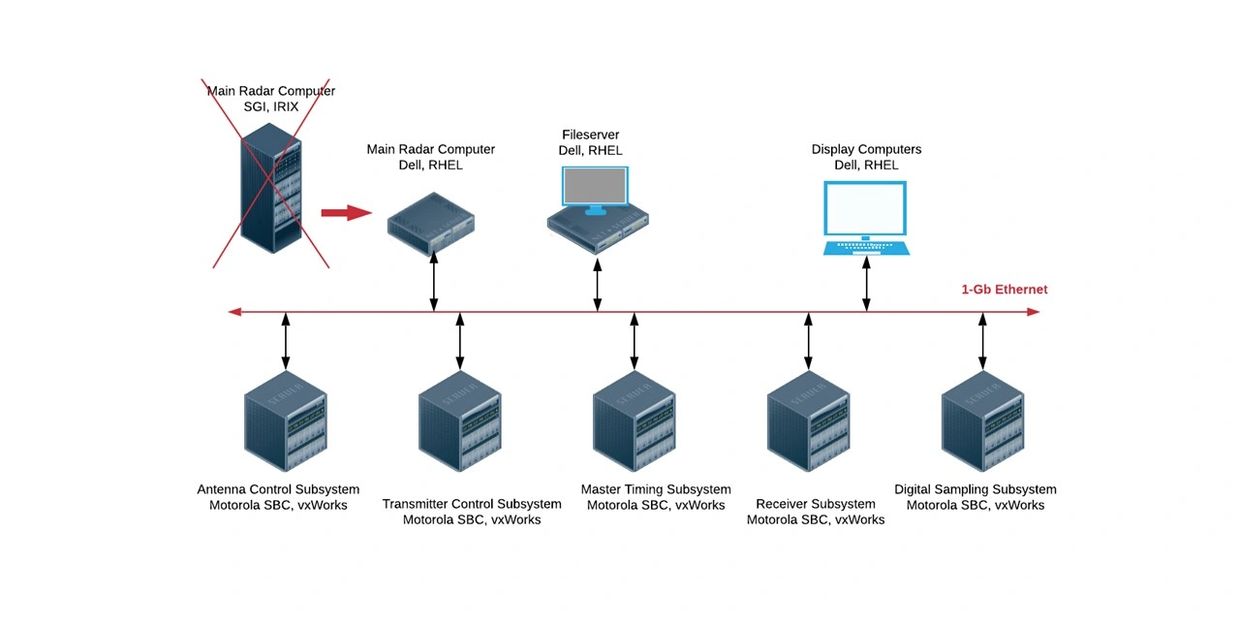Signed in as:
filler@godaddy.com
Signed in as:
filler@godaddy.com

Real-Time Open System Architecture (ROSA) was originally developed by the Massachusetts Institute of Technology (MIT) Lincoln Laboratory (LL) to standardize the hardware configuration and software structure of radar systems. The MIT/LL's ROSA started as the backend electronics of the Radar (hence the R in ROSA is sometimes referred to as Radar) but has since expanded to other instrumentation systems requiring Real-time response, including radar and optics. Before the ROSA project, the instrumentation radars at major test ranges are built with custom hardware using highly-specialized proprietary interfaces. The goal of the ROSA project is to design an open architecture using Commercially Off The Shelf (COTS) hardware with non-proprietory interfaces for radar systems. In addition to MIT’s Haystack Observatory, several variants of the ROSA design have been installed at the Reagan Test Site, Eastern Range, Western Range, Pacific Missile Range Facility, and other forward-deployed DoD assets.
A block diagram of the a variant of the MIT/LL's ROSA system is shown in Figure 1. Key features are as follows:
We have highly trained engineers who received technology-transfer from MIT/LL on the development of the ROSA project since 2009. Our engineers have assisted in installing and testing several ROSA I systems at the Pacific Missile Range Facility. Our engineers developed numerous system updates/algorithms that are now incorporated in the current ROSA I baseline.

With the discontinuance of the Silicon Graphics Incorporated's (SGI) Origin server product line, the Main Radar Computer is re-hosted in a Dell Server running Red Hat Linux Enterprise operating system. To match the processing power of an SGI multi-compute node Origin server with 16 processors, the Dell server is populated with four sockets of multi-core processors. The radar Real-Time Processing (RTP) software is re-coded to execute from 64-bit MIPS RISC processor to Intel’s 64-bit Xeon processors.
Our highly trained engineers have recently upgraded the architectural structure of a ROSA I with Linux MRC to meet cybersecurity compliance.

The Real-time Open System Architecture (ROSA) II is the latest iteration of the ROSA framework. ROSA II retained the basic hardware structure of ROSA I. The significant change is the structure and operation of the software. A block diagram of the software structure for the ROSA II is shown above. It is designed to improve the following features over ROSA I predecessor:
The current ROSA II implementation is primarily employed on the radar Real-Time Programming software in the Main Radar Computer. With the restructuring of the software, the following were also performed:
This is a content preview space you can use to get your audience interested in what you have to say so they can’t wait to learn and read more. Pull out the most interesting detail that appears on the page and write it here.

The WideBand-COherent Signal Processing radar was developed by XonTech, Inc. in the 1990s. It has at least 20-ft Cassegrain antenna and 3-MW C-Band Klystron transmitter. The backend electronics includes the following:
Our engineers upgraded the Timing & Waveform Generator, Analog-to-Digital Converter, and Digital Signal Processor chasses to address the obselences of parts. The Timing & Waveform Generator upgrade includes Phase IV Arbritrary Waveform generator. The ADC and DSP upgrade is based on Annapolis MicroSystems Wildstar boards.
We can perform a technology upgrade on your existing obsolete systems. We can update the system with Commercially Off The Shelf (COTS) system with the latest development technology.
To meet operational requirements set by various sponsoring programs, we routinely develop algorithms to meet the specification. With our broad knowledge of algorithm development, we can research and implement algorithms to optimize system performance or add capabilities.
We can update your existing software and update your hardware with modern technology to meet the design requirement. The design can be a new feature added to an existing system or to address hardware obsolescence.
We have updated the system architecture of several radar systems (XonTech's WB-COSIP and MIT/LL's ROSA) to meet the DISA cybersecurity RMF requirement. We have restructured network flow, updated operating systems, and implemented STIGSs, SCAPs, and Nessus scans. We can evaluate the security vulnerabilities of your systems and perform software/hardware upgrades to meet cybersecurity.
Copyright © 2019 onBoresight Research - All Rights Reserved.
connect@onboresighteng.com